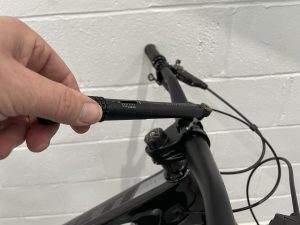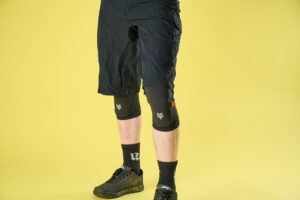Carries the entire weight of Intense's trail expectations on its shoulders
Intense Primer 29 Pro review
The Intense Primer has evolved with a broader purpose, and carries the entire weight of Intense’s trail expectations on its shoulders.
>>> Best full suspension mountain bike in 2019

Intense Primer 29 Pro review
Until recently, Intense’s trail bike range took a scattergun approach with five different models to choose from. For 2020 it has zeroed its sights, focussing on just a single trail bike; the Primer. That said, this new chassis is offered in several configurations; choose either 29in or 27.5in wheels, or a combination of the two in the shape of the intriguing Primer S mullet bike.
In its previous guise, the featherweight Primer was scalpel sharp with a hair trigger response and the ability to make you feel both 10 years younger and 10mph faster. The revised model is much sturdier, with a stiffer swingarm, an additional 10mm travel, a chunkier frame and reworked linkage that changes the suspension characteristics.
Designed by Cesar Rojo‘s Barcelona-based CERO studio, the new Primer retains the sharp lines of the old bike, but adds some modern touches, such as a hidden upper link pivot, seamless seatpost clamp and comprehensive rubber frame protection.
While certain elements of the geometry have evolved (the head angle is over 2° slacker) others haven’t; the reach on our size Large frame is only 6mm longer than its predecessor and the seat angle has got slacker.

Dual uprights stiffen swingarm over predecessor
Suspension
The Kashima-coated Fox suspension is top-of-the-range, but the 34 suspension fork leaves the front end looking anaemic. Fox doesn’t usually offer the 34 with more than 140mm travel, which means Intense has specifically chosen to go beyond that limit, and the consequence is a lack of stiffness. This means it’s hard to place the bike with complete confidence or trust the steering when pushing hard. A much better choice would have been to fit the stiffer Fox 36 – found on the Primer S – to the entire range.

150mm-travel Fox Factory 34 fork lacks stiffness
At the back, the Float DPX2 shock can be run in two different positions, which allows you to change the head angle by +/-0.6° and the BB height by +/-8mm. A side effect being that the suspension also has more progression in the Lower position. Swapping between the two is easy and the hardware is chunky, so there’s less chance of losing vital bits by the trail side.

Flip-chip is user-friendly
Components
Intense has opted for a mix-and-match approach to the components. While the SRAM drivetrain worked reliably during our test, the Shimano XT rear brake suffered from a constantly shifting bite point. There’s plenty of power – especially from the four-piston caliper up front – and a light action, but we could never be sure how far we needed to pull the back brake before the pads would hit the rotor. Intense has decided not to fit the latest design either, which seems like a missed opportunity.
Compared to the Santa Cruz Hightower, the Primer has a long seat tube and a short dropper post. In fact there’s around 20mm difference between both bikes, and that really hampers how aggressively you can ride it on steep descents and rough terrain. It also restricts the potential for moving up a frame size.

Performance
Initially we set up the Primer with 30 per cent sag, but the bike would drop easily into the mid-stroke and never get anywhere near full travel (more like 110mm). The reason for this is a combination of the end stroke progression from the linkage and the large volume spacer inside the shock. Intense says this is because it wanted the Primer to ride high in the travel and feel responsive under power. All well and good, but you just end up riding around with a load of travel you can’t use.
To increase the operating window, we tried various smaller volume spacers, eventually settling on the 0.6in, instead of the stock 0.9in. This allowed us to get full travel with our sag at 30 per cent, but the first half of the stroke was still used up in the blink of an eye, and then we’d start to hit a wall towards bottom out. To help generate some support in the mid-stroke, we added lots of low speed compression damping. It worked – to a degree – but the compromise was greater harshness.
On technical climbs, the lack of mid-stroke support combined with the low BB, meant that we regularly used the compression lever to avoid striking pedals. Fortunately the shock position under the top tube means it is always within easy reach.

Verdict
Although the raw speed of the old Primer has been diluted in its new guise, this new version remains a fast bike that handles pretty well, and it would suit a more traditional diet of trail centre singletrack, where long, gradual climbs mix with flowing descents and you never have to be that dynamic. Where it begins to miss the mark are on bike park-influenced trails, when you really load up the suspension into corners and jumps, as well as rough, challenging downhills because the suspension doesn't feel consistent and the front end lacks precision. For a brand new platform, it has one foot in the past, and some of the spec choices are confused. That said, if price is your bottom line, it's a grand cheaper than the Hightower CC X01, and even the fully loaded, top-of-the-range Primer Elite with carbon wheels still manages to undercut the Santa Cruz by £100.















